Sahiyo takes part in a variety of virtual NGO CSW 65 Forum events in March
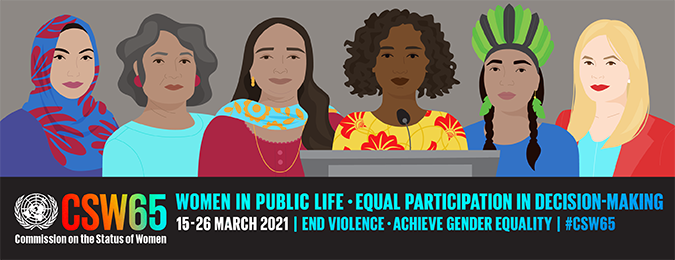
Due to the COVID-19 pandemic, the 65th Commission on the Status of Women (CSW) meetings took place virtually March 15-26, with thousands of individuals from civil society from across the globe taking part to collaborate and connect with each other on the pressing issues of our times and the progress we have made toward achieving gender equity and equality. Every year the NGO CSW/NY organizes the civil society side of the United Nations Commission on the Status of Women. The NGO CSW Forum runs parallel to the official session taking place at the U.N. Headquarters. This provides civil society the opportunity to engage in the processes and CSW sessions without ECOSOC-accreditation or a U.N. grounds pass. This year, Sahiyo co-hosted, organized, and was a speaker at the following parallel sessions: March 16th Using Storytelling to Shift Social Norms and Prevent FGM/C Sponsored by Sahiyo & StoryCenter Sahiyo and StoryCenter introduced their collaborative Voices to End FGM/C project, which centers on storytelling by survivors and those affected by female genital mutilation/cutting (FGM/C) as a tool to challenge social norms that perpetuate the practice. Using a combination of didactic presentation, audience participation, and short videos, the presentation explored the theoretical underpinnings of the Voices Project, highlighted the success of our digital storytelling workshops, and shared how the project has supported women in their healing journey and furthered efforts to prevent future generations of girls from enduring this form of gender-based violence. Read a recap of the event here. View the event here. [youtube url=”https://youtu.be/eqKWrODSODg”] March 19th The Power of Digital Media and Achieving Gender Equality Sponsored by Muslim American Leadership Alliance (MALA) Digital media has been a powerful resource toward achieving gender equality. It has been integral in raising awareness for issues pertaining to gender-based violence; equity and equality in social communities; and economic participation for women. It also has been a resource to provide financial literacy and economic opportunities for women on a global scale. This panel convened nonprofits, corporations, digital media experts, and activists to bring forth a comprehensive dialogue on how current and future digital/social media tools can further accelerate the realization of gender equality and the empowerment of all women and girls. CSW 65 theme is an assessment of current challenges that affect the implementation of the Platform for Action and the achievement of gender equality, and the empowerment of women, and its contribution towards the full realization of the 2030 Agenda for Sustainable Development. View the event here. Panelists: Mariya Taher | Co-founder, Sahiyo Sali Mahgoub | Deputy Director at Obama Foundation Holly Weckler | Developer Innovation Lead at Synctera March 23rd Amplifying The Voices On Ending Female Genital Mutilation Sponsored by Soroptimist International Co-sponsored by North American/European Caucus This event addressed violence against girls, focusing on female genital mutilation/cutting in North America, Europe and beyond which hinders women from achieving gender equality and empowerment. Various aspects of this issue were addressed by experts and survivors who work to achieve the Sustainable Development Goals (SDGs) and end all forms of violence against women. Furthermore, it addressed the lifetime trauma FGM/C has on victims’ wellbeing and the effect of COVID-19 on the lived experiences of the girls and women in relation to FGM/C. View the event here. March 24th Partnerships to Accelerate Global Action to End FGM/C by 2030 Sponsored by Global Platform for Action to End FGM/C When the Beijing Declaration and Platform for Action was adopted, estimates suggested that 133 million girls and women had experienced female genital mutilation/cutting in Africa alone. With improved data, estimates now suggest 200 million girls and women globally have been affected. If action to end FGM/C is not accelerated, an estimated 68 million girls will be cut by 2030. The COVID-19 has further impacted progress towards abandonment of FGM/C. Hearing first-hand from grassroots activists and survivors, this session explored models of success from specific communities across different continents that have led to sustained reductions in FGM/C prevalence and have the potential to accelerate progress through broader adoption. The Global Platform for Action to End FGM/C, an international group of organizations advocating to stop FGM/C, of which Sahiyo is a founding member. Read the reflection blog post here. View the event here.
Sahiyo partners with GirlUp ESCP for virtual event
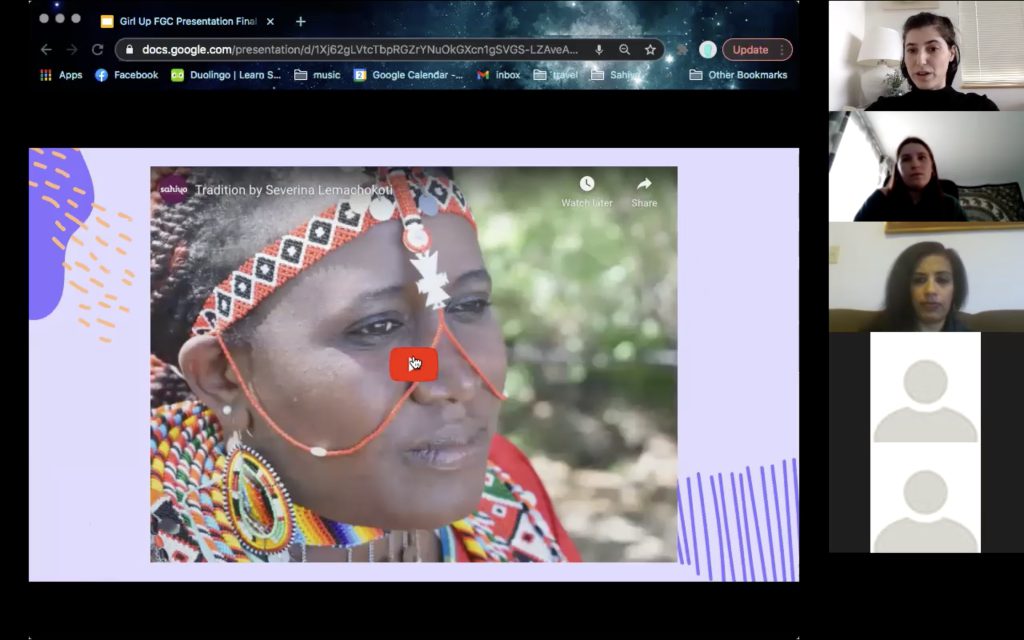
On February 2nd, Sahiyo partnered with GirlUp ESCP for their inaugural event to present an introductory overview of the issues surrounding female genital cutting (FGC), and educate their community on what they can do in their individual lives to help empower communities to abandon FGC. ESCP is an internationally recognized university located across Europe whose main focus is on business education. This branch of GirlUp is made up of student leaders and activities from the ESCP school who are passionate about women’s rights and empowering girls. [youtube url=”https://youtu.be/UxEWKCpa5H0″] This educational and informational event began with a PowerPoint presentation and a screening of a select few of the Voices to End FGM/C videos. These videos helped to give context and personal connection to the often overwhelming statistics about FGC. They also helped to highlight some of the most pressing issues facing survivors, such as medical stigma, community ostracization, and the prejudices coming from non-survivors and people who do not come from practicing communities. These videos helped us to demonstrate the global scope of FGC and the diversity of experiences of survivors. The event also gave participants information and tools to help them in their advocacy, including linking them to local organizations focusing on this issue in their area. The participants in this training left with a better, more comprehensive understanding of the issue and with the tools to immediately involve themselves in activism around FGC. At the end of our presentation, our guests had the opportunity to have their questions answered by Sahiyo co-founder Mariya Taher. Trainings like this one are incredibly important as they help to dispel the negative stereotypes that surround FGC and help all people become more enlightened and conscious activists. When done well, education can be a life-changing tool not only to address negative stereotypes, but to empower all communities to end FGC and gender-based violence. Presentations like these are just the start of a lifelong journey to understand how and why FGC happens, and what we all can do about it. If you are interested in hosting a presentation such as this one at your institution, please email our team: info@sahiyo.com.
Voices to End FGM/C
Voices to End FGM/C Voices to End FGM/C is mobilizing a critical mass of storytellers and activists from across the globe by bringing people together to share and heal from their experiences of female genital mutilation/cutting (FGM/C), connect and grow as leaders in their own communities, and create short videos calling for an end to this harmful practice. Watch all digital stories View Program Overview History & Impact Voices to End FGM/C is a joint digital storytelling project initiated by Sahiyo and Silence Speaks. In 2018, the two organizations launched their inaugural digital storytelling workshop, bringing together survivors of FGM/C living in the United States to surface their personal experiences with FGM/C. These nine women’s stories elevated the conversation on FGM/C in the U.S. and the stories have been widely shared through online platforms, screening events, and media articles. Initially called, Sahiyo Stories, the project has servedas an educational tool to discuss FGM/C amongst survivors and within practicing communities. Since 2018, Sahiyo has conducted 9 workshops under the now named Voices to End FGM/C project resulting in the creation of 88 videos that have collectively garnered over 120,000 views across our social media platforms. The Voices project is ultimately about breaking from deeply ingrained social norms by normalizing the voices of those who dare to speak publicly and openly about a harmful practice that for many communities is considered taboo to speak about openly and publicly. With storytelling comes a ripple effect, as one person’s story can inspire others to share their own. As more stories are shared, they contribute to bridging the data gap regarding the number of women and girls impacted by FGM/C globally. 9 Workshops 82 Participants from 19+ Countries 88 Videos 120,000+ views After taking part in our Voices program, 92% of our workshop participants have remained involved with our organization, serving as guest speakers in events and advisors on projects, such as our Critical Intersections Research and developing educational materials. Webinar Highlight: Youth Advocacy Against FGM/C: A Conversation on Change On November 4, 2024, Sahiyo hosted a webinar featuring dynamic youth advocates, including Voices alumni Umme Kulsoom Arif, Hunter Kessous, and Saza Faradilla, as well as Sahiyo volunteers Nur Bookwala and Atiqah Suhaimi. The webinar provided a safe and supportive platform for these young advocates to discuss their personal experiences in advocating against FGM/C and to share insights into how their advocacy efforts have evolved over time. Click HERE to watch the webinar. The map below highlights the countries represented by participants in the Voices to End FGM/C project, showcasing the global reach and diverse backgrounds of our storytellers. These stories have been used on a variety of platforms as educational material, serving not only communities that continue FGM/C but also aiding in the training of healthcare professionals to support survivors, government officials who can use policy to address FGM/C, and other service providers who might be able to support survivors and work towards prevention for future generations. Visit the Voices website to learn more about the project Explore our Voices Screening Guide to effectively use our digital stories for FGM/C advocacy and education and our Sharing Your Experience with FGM/C Guide to empower individuals and communities in sharing personal narratives. Voices to End FGM/C Podcast Voices to End FGM/C has grown to include more than 80 storytellers from 19+ countries. They came to our workshops and crafted powerful short videos … but so much was left unsaid. If you’re interested in hearing more from our storytellers and learning more about the medical and legal landscape for FGM/C in the U.S. and in other parts of the world, tune in now to our podcast. In six episodes ranging in length from 20-40 minutes each, Mariya and Amy talk with Voices digital storytelling participants about the complex familial, cultural, and political contexts of their stories. Some episodes bring in guests who have acted in their capacity as partners, therapists, public health professionals, and elected officials to speak out against FGM/C. If you’ve always wanted to know more about FGM/C, or if you’re wondering why, as a feminist or social justice activist, you should care about the topic, tune in now. All episodes are available on the Voices to End FGM/C website, as well as on Apple Podcasts and Spotify. Listen to Episode Zero below: Listen to more episodes Read about our Storytellers: Support our Voices to End FGM/C Program
Digital advocacy: The future of activism for survivors and activists

by Sandra Yu Activism is the policy or action of using vigorous campaigning to bring about political or social change. Prior to Sahiyo, I thought to be an activist was to be loud. Anything less than protests and demonstrations picketing for change outside the White House was not really activism. Actionable change came from legislation and policy changes. I scoffed at digital activism – trending hashtags and posting black squares on Instagram didn’t mean you were an activist. At Sahiyo as a programs intern, I gained a new appreciation for storytelling and digital advocacy as forms of healing and activism, respectively. In contrast to the physical mobilization of masses in protests, picketing, and policy-based activism, storytelling is a distinctly emotional and psychological mobilization. I remember watching my first Voices to End Female Genital Mutilation/Cutting (FGM/C) video – Change by Rhobi Samwelly. She shared her story in the short span of 3 minutes and 51 seconds, and in that short period of time, I felt as if I had visualized her pain, trauma, and conviction to end FGM/C. It is through storytelling that one will understand the need for activism; the picketing will come later. Storytelling is particularly impactful in activism against FGM/C. As a harmful and pervasive social norm in many cultures, FGM/C is silently maintained across generations under the guise of cultural normativity. To break the culture of silence is to risk ostracization from their families and communities. Yet, many survivors have taken that plunge and have engaged in storytelling to protect future women from being cut. As allies, it is our job to amplify their stories so that more people may hear them and become inspired to create change. I recently attended a webinar that spoke about how we can best amplify voices through digital advocacy. Digital Storytelling and Advocacy: How Stories Can Support Progressive Change was hosted by StoryCenter and moderated by Amy Hill; one of Sahiyo’s co-founders, Mariya Taher, presented on the Voices campaign as a panelist. In the webinar, Amy speaks about the need for storytelling as an avenue of advocacy. She presents research on how telling and listening to stories can increase self-esteem and wellbeing, help communities bond and become politicized, and inspire people to take action for change. I translate that as storytelling allows for transformation. It allows survivors and community members to transform the trauma of FGM/C on their bodies and mental health into a point of connection with others of the same community. Across activist communities, storytelling allows for a transformation from discomfort to vulnerability. Isabel, another intern at Sahiyo, wrote about her experience with StoryCenter and Sahiyo’s co-hosted webinar, Intersecting Stories, where she engaged in intimate storytelling that glimpsed into “the magical nature of storytelling – how words weave friendships, trust, and respect.” I believe storytelling has a way of transcending the individual to bind communities together through shared values and experiences. In the current age of digitization, we see stories framed in a variety of mediums such as Instagram, Twitter, and Facebook. While it may be easy to get lost in trends, hashtags, and stories in digital activism, I find that digital advocacy is equally powerful as traditional media in allowing us to amplify the voices and stories of survivors. The process of connecting people and communities across the world through a screen is an important concept to develop. I’m proud to be a part of an organization that creates change through digital advocacy and storytelling.
Orchid Project releases report detailing the pandemic’s impact on female genital cutting
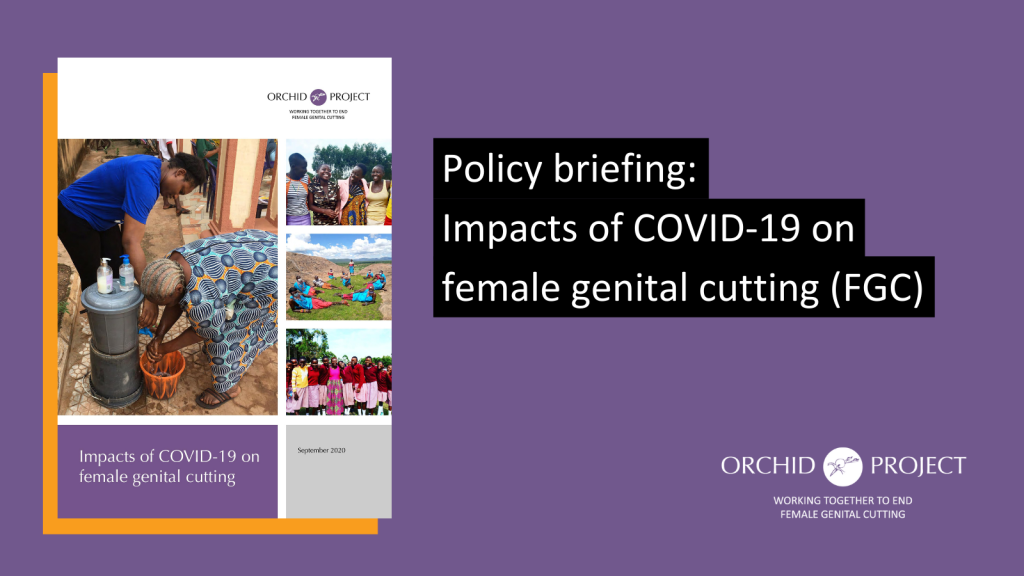
By Hunter Kessous Reports of an increasing rate of female genital cutting (FGC) began early in the pandemic. We are now nine months into the lockdowns and school closures, which have propagated the cutting of young girls. In response, the Orchid Project, decided to further investigate the impact of COVID-19 on the practice of FGC and the movement to end it. The Orchid Project is a nongovernmental organization based in the United Kingdom advocating for the end of FGC globally. Throughout the summer, various grassroots organizations and non-governmental organizations have hosted webinars elucidating the effects of COVID-19 on specific organizations. Sahiyo has shared blog posts reflecting on some of these webinars, which have focused on work in Nigeria and Kenya. There are some key pieces of information shared between these webinars and the Orchid Project’s reports. For example, COVID-19 induced lockdowns and school closures are creating opportunities for FGC to be performed undetected. When girls stay home, they are automatically at a greater risk of undergoing FGC. Furthermore, safe spaces, such as shelters and mental health services, have been closed down. Even medical attention is difficult for FGC survivors to receive, as resources have mainly been diverted to the pandemic. Lack of essential health services and safe spaces for girls and women is a serious concern. According to the report, “Resourcing and programming to end the practice in Asia are extremely limited, so the impact of the COVID-19 pandemic on activities to end FGC have been less significant than in West and East Africa.” The report gives an alarming account of how economic hardship caused by the pandemic has also led to an increase in FGC. In some communities, girls who have been cut are often seen as more marriageable and receive higher bride prices. The bride prices can then be exchanged for food and essential supplies, which has motivated families to cut their girls in this time of extreme economic hardship. Another economic factor involves former cutters who have been returning to the practice, in need of the compensation it will provide. In addition to affecting the practice of FGC, there have also been drastic effects on the movement to end FGC. Nearly all of the groups that were interviewed by Orchid Project for the report have experienced severe restrictions on programming due to stay-at-home and distancing orders. Many organizations have responded by shifting their programming to virtual and media-based formats. However, this is not without its own challenges. Unequal access to technology and internet, along with the often high prices of radio and television communication, have been major obstacles to continuing community dialogues about FGC. The greatest need that the grassroots organizations are currently facing is urgent, flexible emergency funding. This is not to say that the grassroots organizations have not adapted to the dilemmas created by COVID-19. There have been many creative approaches to continuing their important work. Some in-person programming has continued with social distancing and the use of personal protective equipment. WhatsApp and social media platforms are being used to share key information, stimulate dialogues, and share podcasts. Hotlines have been created for at-risk girls; and some activists are even housing these girls in their own homes. The movement to end FGC has certainly taken a hit, but it is not without hope, thanks to the ingenuity and dedication of grassroots activists worldwide. Read the full report by the Orchid Project.
Digital advocacy on female genital cutting in the time of COVID-19
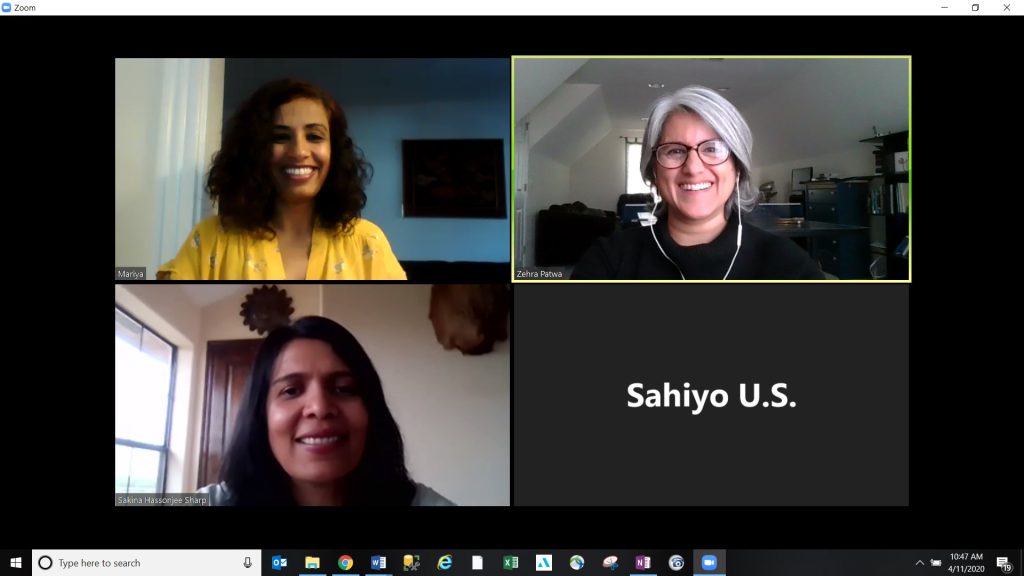
By Miranda Dobson “For many parents in the Bohra community who are thinking about having their daughters undergo female genital cutting, the delay that COVID-19 has caused is likely not a big deal, as it can happen any time from age 7. There is no time limit.” Aarefa Johari is a co-founder of transnational organisation Sahiyo, based in Mumbai, India. “For those who are unsure about whether or not to cut their daughters, this delay could mean there is more time to debate, and hopefully they may change their minds.” Sahiyo works with Asian communities, with a special focus within the Dawoodi Bohra community, which is largely concentrated in India and Pakistan, but also dispersed globally across Europe, North America and Oceania. Sahiyo focuses on ending female genital cutting (FGC), often known as female genital mutilation (FGM), and within the Bohra community as khatna by engaging in a variety of storytelling programs to help elevate dialogue on the issue and build awareness of its harms How is COVID 19 affecting the practice of female genital cutting? Fellow co-founder Mariya Taher, based in Boston, U.S., explained that the impact of the coronavirus pandemic on female genital cutting in the North American Bohra community and other FGC practising communities is likely similar. “It’s difficult to know if FGC is happening more or less right now. Broadly we know that gender-based violence is rising. Domestic violence is rising. The thing that is most immediately concerning is that necessary support services aren’t in place. “There is a poor response from law enforcement, and things like mental health services which were already lacking for survivors of FGC, are even more vital now and just not in place. This is likely the most difficult hurdle right now.” Mariya outlined how the pandemic is also affecting progress around ending FGC at a more structural level. “In Massachusetts where I am, the state law against FGC has been delayed because there are more pressing things to look at right now. Legislation is not a solution in itself but a necessary step towards change, and needs to be supported by community outreach.” Before the coronavirus pandemic hit, much of Sahiyo’s work involved working with activists and community members through in-person retreats and Thaal Pe Charchas – conversations over food. Sahiyo is adapting to the crisis In the current climate, Mariya, Aarefa and fellow co-founders, Priya Goswami and Insia Dariwala, have needed to pivot and work increasingly through technology and digital spaces. “A strength of Sahiyo’s is our digital presence,” Mariya added. “We’re able to still connect with community members in that way, and we held our first ever digital activist retreat in April, which was supposed to be in New York in person. “It was an experiment and we also had men attending for the first time, which was really cool. What surprised me was how engaged people were, and how much they wanted to talk about FGC, at a time when so much else is going on. I think it was very cathartic at a time when people just need an outlet more than anything.” Pivoting to digital advocacy Sahiyo has been able to work to their strengths as communicators at this time, and use digital spaces to convey messages, and to great success. They’ve held webinars with over 300 people in attendance, and continue to share survivor stories on their social channels through a project with StoryCenter called Voices to End FGM/C. Aarefa shared how Sahiyo India is likely to follow suit. “We had planned to have some community events at this time, which haven’t been possible. These could now happen virtually as a way to reach out to people. It’s encouraging how well this went in the U.S.” Sahiyo India has also recently launched the first iteration of an exciting new app. “It’s called Mumkin, and it’s about making difficult conversations possible. We’re excited to be rolling it out at a time when digital advocacy and communications are so important.” Aarefa and Mariya both recognised how COVID-19 is likely to affect communities and their work going forward on a range of levels. “It’s important to acknowledge that we’re living in this altered reality. We can’t just talk about FGC without talking about COVID – it’s not relatable and it doesn’t feel authentic because it’s the issue that everyone is facing,” Mariya told us. “In general, we’re seeing a shift in the social sector. COVID will be a focus for a lot of grants for a while. That’s really important and should be the case. I hope though that it doesn’t mean organisations will force-fit COVID into their work. Of course it’s vital, but it shouldn’t relegate other issues, particularly gender-based violence, which we know is being driven by barriers pandemic responses have put up.” (This interview was carried out via video conferencing and written by Orchid Project’s Senior Communications Manager, Miranda Dobson, speaking to Mariya Taher and Aarefa Johari, co-founders of Sahiyo. The piece was originally published on Orchid Project’s website.)
Asia Network to End FGM/C calls for your participation

Malaysian NGO Asian Pacific Resource and Research Centre for Women (ARROW) and British charity Orchid Project are jointly developing a new Asia Network to End FGM/C, to strengthen movements to end the practice of FGC in Asian communities. To shape this network and its priorities, all interested organisations, activists, and stakeholders working in the region on FGM/C or related issues in Asia are invited to fill out this consultation survey. The closing date for this survey will be 22nd December 2019.
Utilizing Participatory Storytelling to Educate – A session at APHA 2019
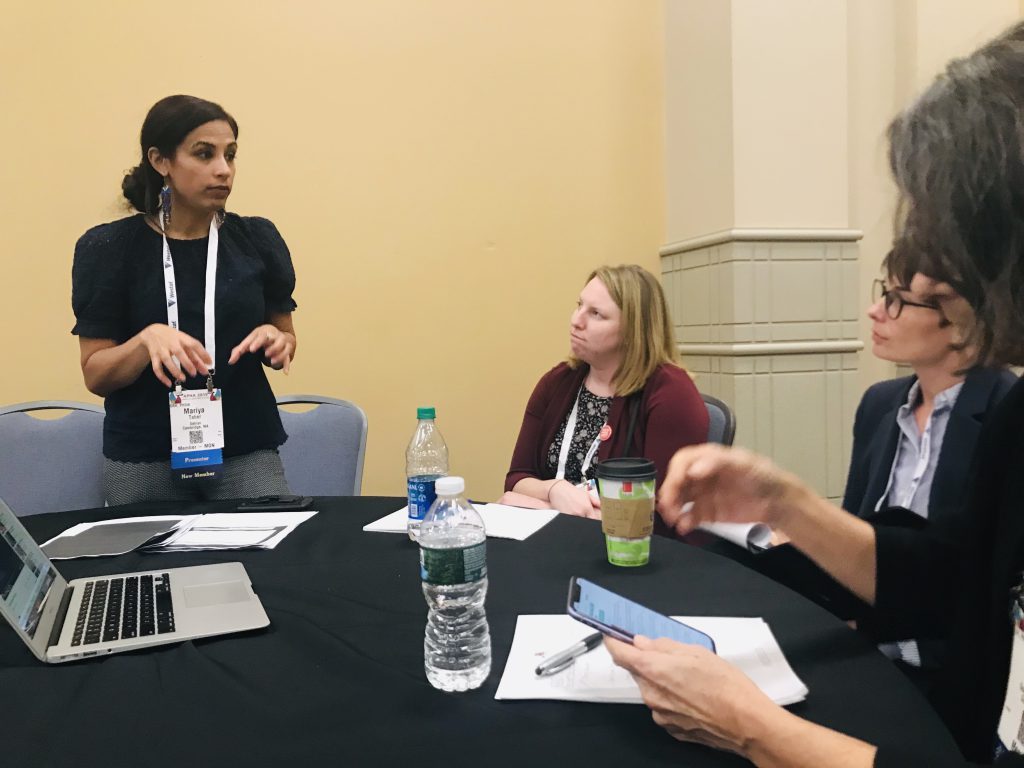
On Nov 4, 2019, Sahiyo’s co-founder Mariya Taher took part in a round-table session at the American Public Health Association’s (APHA) Annual Conference in Philadelphia, Pennsylvania to discuss the Voices to End FGM/C project. Participants were able to view a sample of the digital stories created by survivors. They were also able to learn how by utilizing participatory storytelling methods, we can educate communities, health professionals, and policymakers on female genital cutting. For more information, visit APHA’s website.
Understanding the Supreme Court’s latest judgement mentioning female genital cutting in India
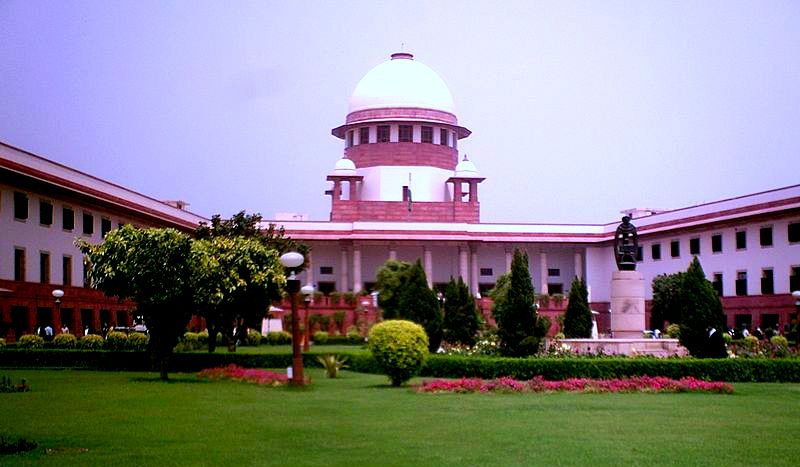
On November 14, after a year of silence on the female genital mutilation/ cutting (FGM/C) case pending before it, the Supreme Court of India mentioned that the case will be referred to a seven-judge Constitution bench. It is likely that the case will now be heard in conjunction with three other petitions dealing with women’s rights and freedom of religion: cases about Hindu women’s entry into the Sabarimala temple, Muslim women’s entry into mosques, and the entry of Parsi women married to non-Parsis into fire temples. Previously, in its September 2018 order, the Court had referred the FGC case to a five-judge Constitution bench. Since then, the case had been pending. On November 14, however, the Supreme Court brought up the FGC case while hearing a batch of review petitions in the case about Kerala’s Sabarimala temple, where women of menstruating age were traditionally not allowed to enter. The review petitions challenged the Court’s 2018 order which lifted the ban on women’s entry into the temple. In its November 14 judgement, a five-judge Supreme Court ruled that the debate on women’s entry into the temple overlapped with other cases about gender and religious rights that are pending before the Court, including women’s entry into mosques and fire temples and female genital mutilation/cutting among Dawoodi Bohras. It stated that a larger bench first needs to rule on the interpretation of the very principles governing the fundamental right to freedom of religion in the Constitution, before passing judgement on all of those cases from different communities. The implications of clubbing these various cases under one umbrella are yet to be seen, but the Court’s judgement does raise some concerns. Although these cases share the common theme of women’s rights within religion, the cultural ritual of cutting minor girls’ genitals is very different in substance from the rules restricting women’s entry into places of worship. It would be ideal if each of these issues are evaluated separately, on a case-by-case basis. Sahiyo believes that the matter of FGC needs to be treated with a little more urgency. Fourteen months have already passed since the Supreme Court first referred the FGC case to a Constitution bench last year. That bench was never formed, and now the Court’s decision to first adjudicate on larger questions of law is likely to stall hearings that may have been scheduled in the FGC case. Since the practice of FGC involves causing bodily harm to young girls, every delay puts more girls at risk of being cut. A quick recap of the FGC case In April 2017, Delhi-based lawyer Sunita Tiwari filed a Public Interest Litigation (PIL) in the Supreme Court seeking a ban on the practice of female genital cutting (also known as khatna, khafz, sunnath or female circumcision) in India. FGC is practiced among the Dawoodi Bohras and other Bohra sects in India, as well as among certain Sunni Muslims in the state of Kerala. Tiwari’s PIL, however, refers only to FGC among the Dawoodi Bohras. After Tiwari’s PIL was admitted in the Court, other intervention petitions were also filed in the case, some supporting a ban on the ancient practice, and one party (the Dawoodi Bohra Women’s Association for Religious Freedom) defending FGC on the grounds that it is an essential religious practice for the Bohras. The Dawoodi Bohra Women’s Association demanded that the matter of FGC be heard by a Constitution bench since it was about the Constitutional right to religious freedom. The case was heard by a three-judge bench which observed during a hearing in July 2018, that the “bodily integrity of women” cannot be violated. However, in September 2018, the bench referred the case to a five-judge Constitution bench. This meant that the practice of cutting a girl’s genitals — which the United Nations classifies as a human rights violation — would now be scrutinised through the lens of religious freedom. In light of the latest Supreme Court judgement, this will continue to be the case, except that now a larger, seven-judge bench will first examine the interpretation of Articles 25 and 26 of the Constitution pertaining to the right to religious freedom, before adjudicating on matters of FGC and women’s entry into places of worship. What the Court said: Majority and Minority judgements The Supreme Court’s judgement on November 14 was not unanimous. Three of the five judges on the bench delivered the majority judgement, in favour of referring the Sabarimala, FGC and other cases to a seven-judge Constitution bench. This 9-page majority judgement was authored by Chief Justice Ranjan Gogoi. The other two judges (Justices Nariman and Chandrachud) authored an elaborate 68-page dissent, insisting that there was no merit to the review petitions in the Sabarimala case and that the other cases of FGC, mosque entry or fire temple entry should not be clubbed together with the Sabarimala issue. The majority judgement stated the following: “The issues arising in the pending cases regarding entry of Muslim Women in Durgah/Mosque;…of Parsi Women married to a non-Parsi in the Agyari;…and including the practice of female genital mutilation in Dawoodi Bohra community…may be overlapping and covered by the judgment under review. The prospect of the issues arising in those cases being referred to larger bench cannot be ruled out…The decision of a larger bench would put at rest recurring issues touching upon the rights flowing from Articles 25 and 26 of the Constitution of India.” The majority judgement specified that the larger bench would essentially have to answer seven questions about the principles of Articles 25 and 26. These questions include these four points: What is the interplay between Constitutional freedom of religion and other rights granted in the Constitution, particularly the right to equality and prohibition of discrimination on the grounds of religion, sex, race, caste, etc? What exactly does “constitutional morality” mean? To what extent can the Court determine whether a practice is essential to a religion or a religious denomination? To what extent can the Court give judicial recognition to
Op-Ed: A Global Platform to End FGM/C

We must accelerate an end to FGM/C. Every 11 seconds a girl somewhere in the world will go through female genital mutilation/cutting (FGM/C.) The procedure is often extremely painful, and carried out with a crude, unsterilized instrument and without anesthesia. Every 11 seconds. FGM/C has no medical benefits, and often has disastrous effects, including a lifetime of psychological trauma, difficulty urinating and menstruating, maternal and child mortality, lack of sexual fulfilment, and sometimes, most tragically, the loss of a girl’s life afterwards. This violation of a girl’s fundamental human rights has no place in the world today. It must stop. Now. Last June at the Women Deliver Conference held in Vancouver, for the first time, global FGM/C activists from Africa to Europe, from Australia to Asia and to North America; women and men, civil society organisations, champions, survivors, and grassroots representatives, all came together to unite voices around a global call to action to end FGM. Together, we are asking, no imploring, the international community to prioritize the ending of FGM/C worldwide, in the same way it responded to other urgent global issues such as HIV/AIDS. It’s estimated that 200 million women alive today are survivors of FGM/C. It is practiced on every continent except Antarctica. There’s no religious requirement for it, and it is practised in Muslim, Christian, Pagan, and even some Jewish communities. There can be little doubt that female genital mutilation/cutting is among the worst human rights violation perpetrated against women and girls in the world today. The practice continues because it is a social norm held in place by the expectations of whole communities–women, men, elders, even politicians. And it continues to be a taboo subject, hidden behind a wall of silence around the world. This too must stop. Next week, at the International Conference on Population and Development (ICPD) in Nairobi, where gender equality and reproductive and sexual rights are high on the list of priorities, there is a tremendous opportunity to shine a giant light on the issue of FGM/C and move it firmly to the top of the agenda where it belongs. Kenya’s President Uhuru Kenyatta, sitting beside Canada’s Prime Minister Justin Trudeau at Women Deliver in Vancouver just a few months ago, courageously committed to ending FGM/C in Kenya by 2022, eight years ahead of the Sustainable Development Goal of 2030. It’s an ambitious promise, a challenging target for sure–but it shows leadership, it shows vision, it shows a commitment to the idea that girls’ human rights must be cherished, must be protected. We hope that other governments around the world will follow and commit resources, improved data and research, laws and policies to protect girls at risk, and support for survivors, so that together we can end FGM/C around the world. The End of FGM/C is not just the end of a violation of girls’ human rights, it is also the start of increased economic development for practicing communities and has the power to be completely gender transformative. It is a proven fact that when girls and women fully participate in the economy of a country, it results in significant economic advancement. And so, we ask the global community at the ICPD to join us, to work together on a multi-pronged approach to end FGM/C by 2030. Whole communities must be mobilized and empowered at the grassroots level. Women and men, girls and boys, health workers, traditional and religious leaders, all have to be empowered to embrace the end of this harmful traditional practice. We have to address the root causes of gender equality at the community level; we have to listen to and support grassroots organizations that are working in this field; we need an integrated, intersectional approach to ending FGM/C, recognizing the connections with other forms of gender-based violence and linking with existing movements. We have to work with governments to respond to the adaptations to this violation of girls’ and women’s human rights, include medicalization, cross-border practices, and lowering the age of mutilation/cutting. Accordingly, we call on all stakeholders to prioritize resources towards grassroots and community led programmes, and to make funding more flexible, sustainable, and accessible. Whatever our religion, our gender, our ethnicity, –the time has come for every one of us and all our governments to deploy every tool at our disposal to end this harmful practice. FGM/C is a human rights emergency that continues to exact untold harm on a daily, hourly basis. Together we can end it. Sign up to the Global Platform for Action to End FGM/C today at www.ActionToEndFGMC.org. This call to action has been endorsed by Amref Health Africa, Coalition on Violence Against Women, End FGM Canada Network, End FGM European Network, Equality Now, Orchid Project, Sahiyo, The Girl Generation, The Inter-African Committee on Traditional Practices, The US End FGM/C Network, There Is No Limit Foundation and Tostan.
